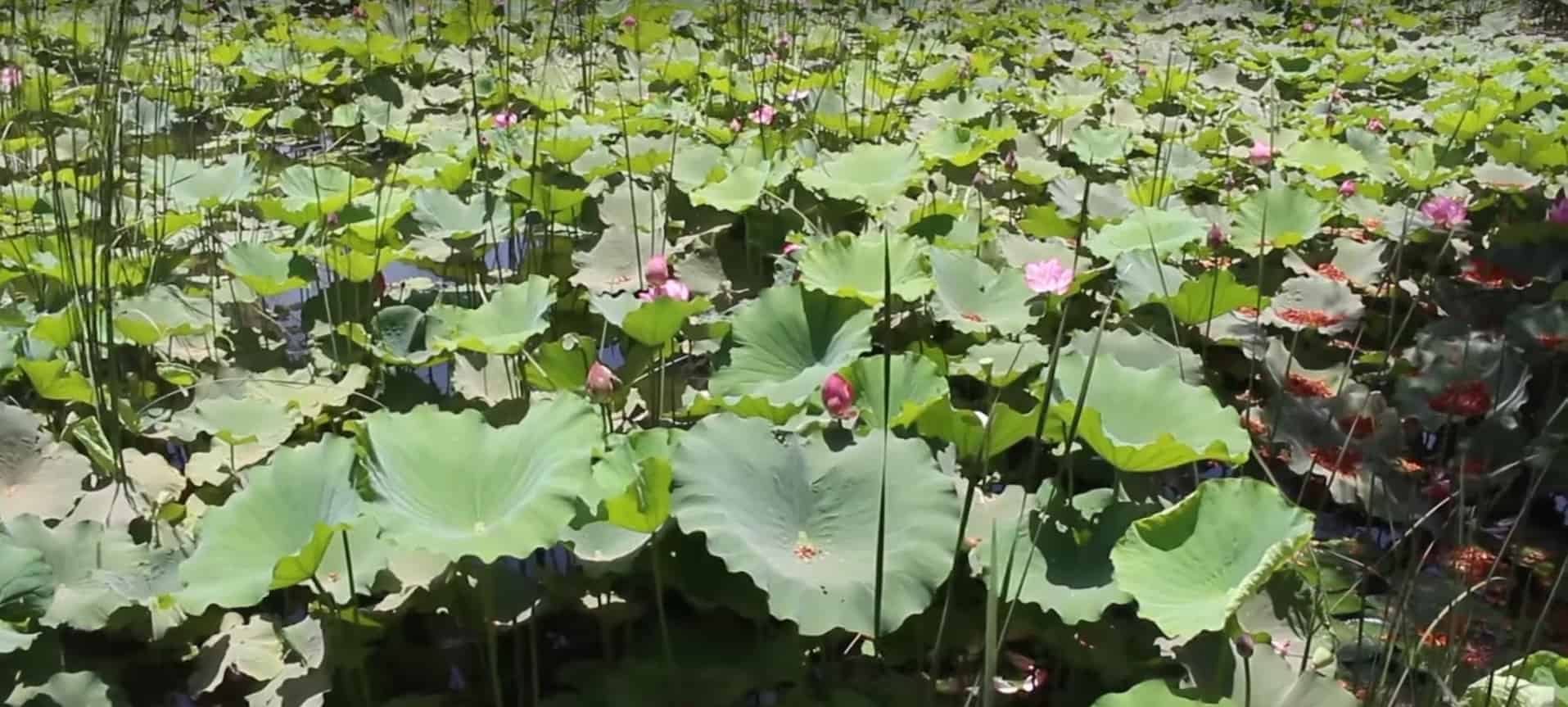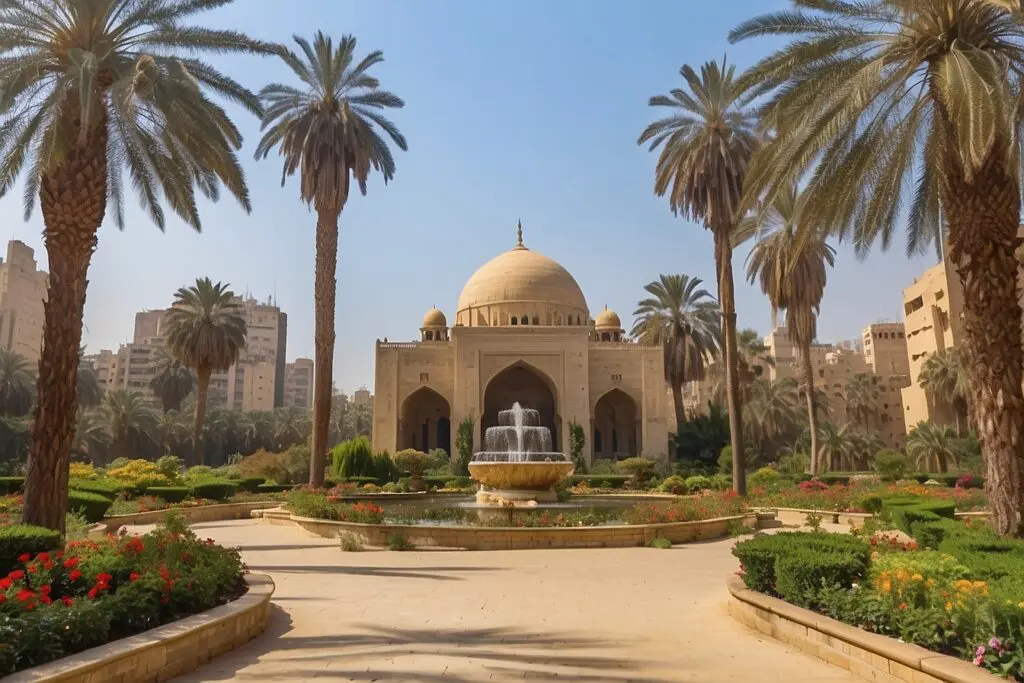Behold the Beauty of Nature in Cairo’s Orman Garden

Updated On: April 07, 2024 by Salma Ihab
Being Egypt’s capital, Cairo embraces a lot of tourist attractions and historical sites worth visiting. You can look up any list online stating the best destinations to stop at in Cairo.
However, it is not guaranteed that these lists will not miss any of the important landmarks. The Orman Garden is usually one of the places taken for granted. It has visitors, too, but it receives a different hype than other places in Cairo. For nature lovers, this garden will be way beyond a regular patch of greenery and plants.
The garden is a flaw of plant life and vegetation that tells a tale of history. Take the time to scroll down and read the article so you learn that missing out on this place is such a significant loss.
An Abstract about the Orman Garden
Before digging into the details of the garden’s existence, learning about the name’s origin is always interesting. Many foreign tourists mistakenly believe that the Orman is an Arabic word.
It is not; it is a Turkish word that means “The Forest.” The Orman Garden came into existence during the Ottoman reign in Egypt. Khedive Ismail Pasha was the one behind the existence of this garden. He built it in 1875, back when he was the ruler of Egypt.
Initially, the garden was part of the Khedive Ismail Pasha’s Palace. It occupied a large area. The reason behind the establishment of the garden was Ismail Pasha’s desire to build an Egyptian forest. He wanted it to resemble the Bois de Boulogne Park, a park in place of the Lemon Garden in Paris. Consequently, Ismail Pasha had decided to hire a French expert, Delchevalerie, for that matter.
The designer succeeded in designing a French-styled park within the private area of Khedive Ismail Pasha’s Palace. However, it ceased being a private garden in 1910. The Ministry of Agriculture included the garden under its management, making it a botanical garden available to the public.
Khedive Ismail Pasha
Ismail Pasha was commonly known as Ismail the Magnificent. The reason behind such naming remains unknown. He was Muhammed Ali Pasha’s grandson. Ismail Pasha became the ruler of Egypt after he left the behest of the United Kingdom.
Besides, his dynasty resulted from his elder brother’s death, so he spontaneously became the heir. Khedive Ismail Pasha had ruled Egypt and Sudan for over a decade, 16 years, to be precise.
Following his grandfather’s footsteps, he wanted to modernise the societies of Africa; North Africa, that is. During his reign, Ismail Pasha contributed immensely to transforming Egypt and Sudan into modern communities.
Besides the Orman Garden, Ismail Pasha had contributed to more than a few structures. Ismail Pasha was of great assistance in building the community of modern Egypt. His contributions were either direct, like making the Orman Garden, or indirect, for he supervised the establishment of the Suez Canal. During the canal’s opening, Ismail Pasha invited prestigious public figures worldwide.
All You Need to Know about the Orman Garden

The Orman Garden is located on Dokki Street in the Giza governorate. It is just a few miles away from the banks of the River Nile, and it sits pretty close to Cairo University.
Above and beyond, the garden covers an area as large as almost 28 acres. It takes account of several types of gardens and features. These include a rose garden, a cactus garden, and a rocks garden. Regarding the garden’s features, it contains a herbarium building and a lotus pond.
Since the garden consists of more than a few gardens, it is usually called Giza Royal Palace Gardens. The Orman Garden is divided into three main sections: the Haramlik Garden, the Salamlik Garden, and the Lemons Garden. The latter was a constant producer of citrus fruits for the Royal Palace.
Major Changes Took Place
On the other hand, today’s garden is a lot different than it used to be. Of course, most, if not all, of the structures built during modern times underwent more than a few renovations.
The total area of the Orman Garden has significantly been reduced to a much smaller area. It went down to 28 acres after the Haramlik Garden was walled off, giving room for the Giza Zoo.
Seemingly, the garden still seemed too large, so another part of it was diminished. Currently, the Egyptian Survey Authority- previously the Public Surveying Authority- houses the northern part of the area of the Orman Garden.
Sadly, the Salamlik Garden left the building, too; it gave up its area for education. The western side of the Salamlik Garden currently houses the School of Engineering. Those significant changes continued so that Cairo University would be brought up. The Salamlik Garden was no longer there because a new street had appeared in that area: El-Nahda Street. The latter links Cairo University with a bridge- the University Bridge is its name.
That alteration escorted to separating the Salamlik Garden from the Orman Garden. This new area sits right next to Cairo University and is close to the zoo, which was part of the garden as well. Subsequently, the Orman Garden was inevitably left with only the 28 acres it currently covers.
The Significance of the Royal Garden
The Orman Garden has become one of the most significant structures in the value of Egypt. It is a wide botanical garden home to many plant species. Besides being an eye candy to nature lovers, it embraces many plant life forms. The garden holds shrubs, cacti, herbs, trees, succulents, palms, and climbers within the borders of its fence.
The Orman’s Botanical Plants
The Orman’s botanical plants appeal to the eye and make the garden one of Egypt’s iconic gardens. More interestingly, the garden has been home to rare plant species.
These species aren’t scattered all over Egypt; they only exist in this garden. They include Erythrina Poe Ppi Giana, Aeschynomene elaphroxylon, and Cassia roxburghii. The International Union for Conservation of Nature (IUCN) stated that despite the beauty of these plants, they still need to be highly protected and well looked after—especially the endangered rare species such as Latania lontaroides and Cycas beddomei.
Above and beyond, the Orman also embraces astonishing features, such as the Orman Herbarium Building. The building includes assemblies of conserved samples. There is also a herbarium; it is a vast collection of dried samples that are kept to fit the characteristics of each plant and fungi.
Herbarians are also responsible for keeping a record of the research that states each plant’s identification and function.
The Orman’s Flower Festival
The Orman Garden is an iconic landmark for lots of different reasons. It contains rare species of unusual plants that can’t be found elsewhere in Egypt, but other factors exist.
These factors include the fact that Egyptians should pay more attention to the beauty of flowers. The floral and plant life all across Egypt does not grab much attention. They usually pick the flowers up and leave them to die or ignore them altogether.
Conversely, Orman’s botanical plants receive a different kind of treatment. It may even be the only place where Egyptians enjoy the beauty of flowers and vegetation.
For this reason, Egyptians celebrate the existence of such iconic nature on an annual basis. They hold flower and plant exhibitions every year. This event occurs every spring on 22 March and lasts until 2 May. It is known as the Spring Festival or the Orman’s Flowers Festival.
This Spring Festival allows companies to display flowers within the garden’s fence. Their plant offering is a wide diversity of several kinds and forms of plants and flowers. This may include cactus, cut flowers, ornamental plants, fertilisers, and pots. They also have seeds for growing plants of every kind.
An Obvious Call to All Nature Lovers
There are lots of Egyptian people who are fond of nature in all its forms. They appreciate whatever nature has to offer, including plants of all kinds. If you are one of those people, you have been in the right place. This article may give you an insight into what the Orman Garden looks like. Still, things, in reality, are pretty different.
Please visit the astounding garden that happens to be one of its kind. Behold the beauty of the floral and plant life that the garden dearly embraces. Take the chance to dive into a new world and come to terms with Egypt’s hidden beauty.
Conclusion
Orman Garden is a shining example of urban revitalization, transforming a neglected landscape into a vibrant oasis of beauty and biodiversity. Through its botanical splendour, cultural richness, environmental stewardship, and social impact, the park embodies the spirit of renewal and resilience that defines Cairo’s vibrant character. As visitors wander through its leafy avenues and soak in the sights and sounds of nature, they are reminded of the enduring power of green spaces to uplift the human spirit and enrich the fabric of urban life. Orman Garden is not merely a park but a living testament to the timeless bond between humanity and the natural world, beckoning us to cherish and preserve it for generations to come.
If you enjoyed reading this article, you might love reading about the historical sites of Alexandria, too.
Have you ever visited these beautiful gardens in Giza? Let us know in the comments below.
More Amazing Egypt Blogs: Muhammad Ali Mosque | Muhammad Ali’s Palace – Shubra | Downtown Cairo | Cleopatra Trail | An Irish Woman Egyptian Reincarnation






